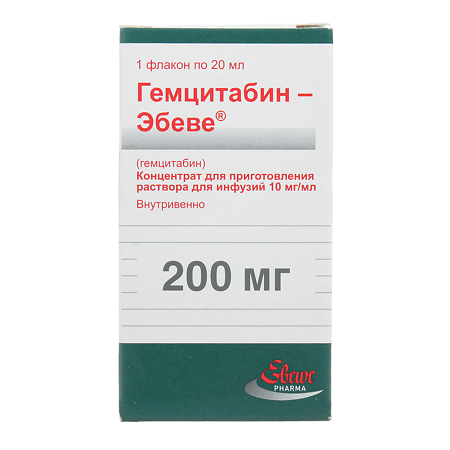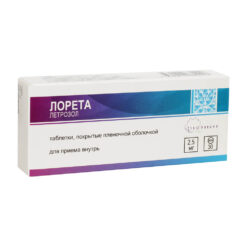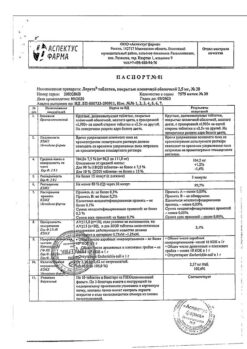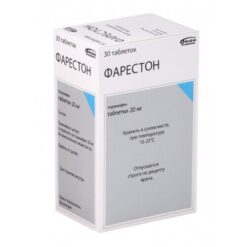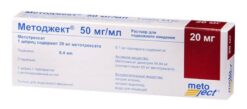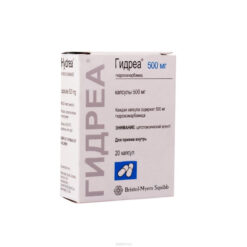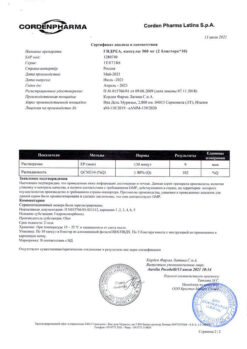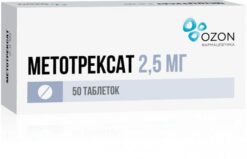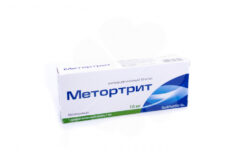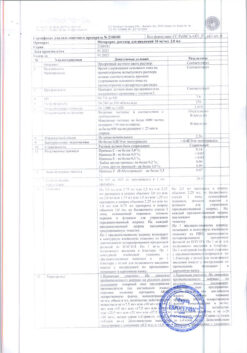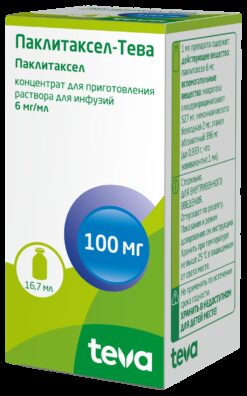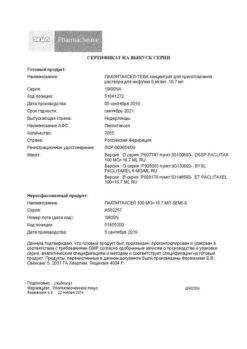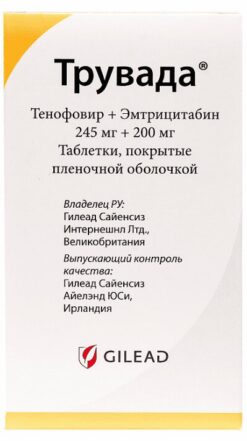No products in the cart.
Description
Antitumor agent.
It has cytostatic action which is connected with inhibition of DNA synthesis. In the cell it is metabolized to active diphosphate and triphosphate nucleosides.
Diphosphate nucleosides inhibit the action of ribonucleotide reductase, with the participation of which deoxynucleoside triphosphates necessary for DNA synthesis are formed in the cell, which leads to a decrease in their concentration in the cell.
Triphosphate nucleosides actively compete for inclusion in the DNA chain and can also be incorporated into RNA.
After intracellular gemcitabine metabolites are incorporated into the DNA chain, one additional nucleotide is added to its growing strands, resulting in complete inhibition of further DNA synthesis and programmed cell death.
Indications
Indications
Non-small cell lung cancer (stages IIIa-IV); late pancreatic carcinomas.
Pharmacological effect
Pharmacological effect
Antitumor agent.
It has a cytostatic effect, which is associated with inhibition of DNA synthesis. Metabolized in the cell to active diphosphate and triphosphate nucleosides.
Diphosphate nucleosides inhibit the action of ribonucleotide reductase, with the participation of which deoxynucleoside triphosphates are formed in the cell, necessary for DNA synthesis, which leads to a decrease in their concentration in the cell.
Triphosphate nucleosides actively compete for inclusion in the DNA chain and can also be included in RNA.
After the incorporation of intracellular gemcitabine metabolites into the DNA chain, one additional nucleotide is added to its growing chains, which leads to complete inhibition of further DNA synthesis and programmed cell death.
Special instructions
Special instructions
It has some activity in late stages of breast, ovarian, kidney, bladder and prostate cancer, and small cell lung cancer.
Use with caution for disorders of hematopoietic processes; impaired liver and/or kidney function. During the treatment period, peripheral blood patterns should be regularly monitored.
With the development of a toxic hematological effect, adjustment of the dosage regimen is required depending on the degree of leukopenia and thrombocytopenia. The safety and effectiveness of gemcitabine in children have not been studied.
Active ingredient
Active ingredient
Gemcitabine
Composition
Composition
Concentrate for solution for infusion 1 ml gemcitabine 10 mg
Contraindications
Contraindications
Hypersensitivity to gemcitabine.
Side Effects
Side Effects
From the hematopoietic system: leukopenia, thrombocytopenia, anemia.
From the digestive system: nausea, vomiting, diarrhea; rarely – constipation.
From the urinary system: proteinuria, hematuria; rarely – peripheral edema; in isolated cases – renal failure.
Dermatological reactions: skin rash, itching, alopecia, stomatitis; rarely – peeling, vesicular rash, eczema.
From the laboratory parameters: transient increase in the activity of liver transaminases, alkaline phosphatase, increase in the concentration of bilirubin in plasma.
From the respiratory system: rarely – bronchospasm, shortness of breath.
From the central nervous system and peripheral nervous system: rarely – drowsiness, weakness, paresthesia.
From the cardiovascular system: rarely – arterial hypotension, pulmonary edema; in isolated cases – myocardial infarction, arrhythmias.
Other: influenza-like syndrome.
Interaction
Interaction
The risk and severity of leukopenia and thrombocytopenia increases after previous therapy with cytostatics.
Manufacturer
Manufacturer
Ebewe Pharma, Austria
Additional information
| Manufacturer | Abeve Pharma, Austria |
|---|---|
| Medication form | concentrate for preparation of infusion solution |
| Brand | Abeve Pharma |
Related products
Buy Gemcitabine-Ebeve, 10 mg/ml 20 ml with delivery to USA, UK, Europe and over 120 other countries.

